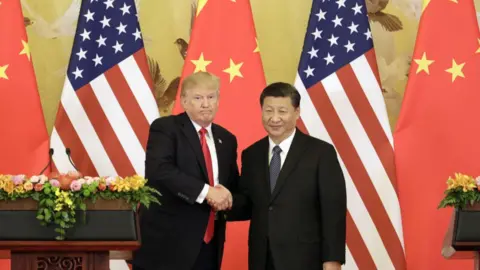Chinese authorities have officially commenced the construction of what is projected to be the world's largest hydropower dam, located in the Tibetan region along the Yarlung Tsangpo river. Premier Li Qiang presided over the initiation ceremony on Saturday, showcasing the project’s significance for Beijing’s energy ambitions. However, this construction has generated considerable unease in downstream countries, particularly India and Bangladesh, due to potential implications for water security and local ecosystems.
The dam, known as the Motuo Hydropower Station, is expected to eclipse the current record-holder, the Three Gorges Dam, once completed. The project comes with a hefty price tag of approximately 1.2 trillion yuan ($167 billion), with Chinese officials asserting that it will generate an astonishing three times more energy than its predecessor. Authorities contend that this venture will also boost local economies and prioritize ecological safeguards.
Critics, however, argue that the dam could enable China to exert control over the Yarlung Tsangpo river, which flows into India’s Arunachal Pradesh and Assam states, and eventually into Bangladesh. A report from the Lowy Institute raised alarms, suggesting that such control could pose a significant threat to the economies of neighboring nations. Indian officials, including Arunachal Pradesh's Chief Minister Pema Khandu, have expressed grave concerns that the dam may lead to severe downstream consequences, potentially drying up vital rivers and threatening local livelihoods and biodiversity.
India’s Ministry of External Affairs has previously voiced apprehensions about the repercussions of China’s mega-dams, urging for transparency and dialogue regarding the interests of downstream states. In response, India is planning to construct a hydropower facility on the Siang river to mitigate the risks stemming from sudden water releases from the Chinese dam.
In addition to India, Bangladesh has also raised concerns, emphasizing the need for comprehensive communication about the dam’s anticipated impact. A letter to Chinese officials sought further clarification regarding the project's implications.
The location of the dam in Tibet’s dramatic landscape, particularly within the world’s largest canyon, has long attracted attention due to its hydropower potential. Planned engineering methods include the construction of extensive tunnels through the Namcha Barwa mountain to facilitate water diversion for the dam's operations.
Despite the claims of ecological benefits and electricity generation, critics frame this project as part of a broader strategy by Beijing to leverage Tibetan resources while failing to address the rights and opinions of local populations. Activists have pointed out that previous protests against hydropower developments have been met with severe crackdowns, leading to arrests and confrontations.
Moreover, there are rising environmental concerns regarding the flooding of biodiverse Tibetan valleys and the safety risks inherent to dam construction in seismically active areas. As China pushes forward with its monumental energy project, regional and ecological dynamics remain deeply entwined, evoking heated discussions about resource management, sovereignty, and environmental stewardship in the transnational context.





















